Donnie Nossov: The End Is Finally Here (No Depression / 2018)
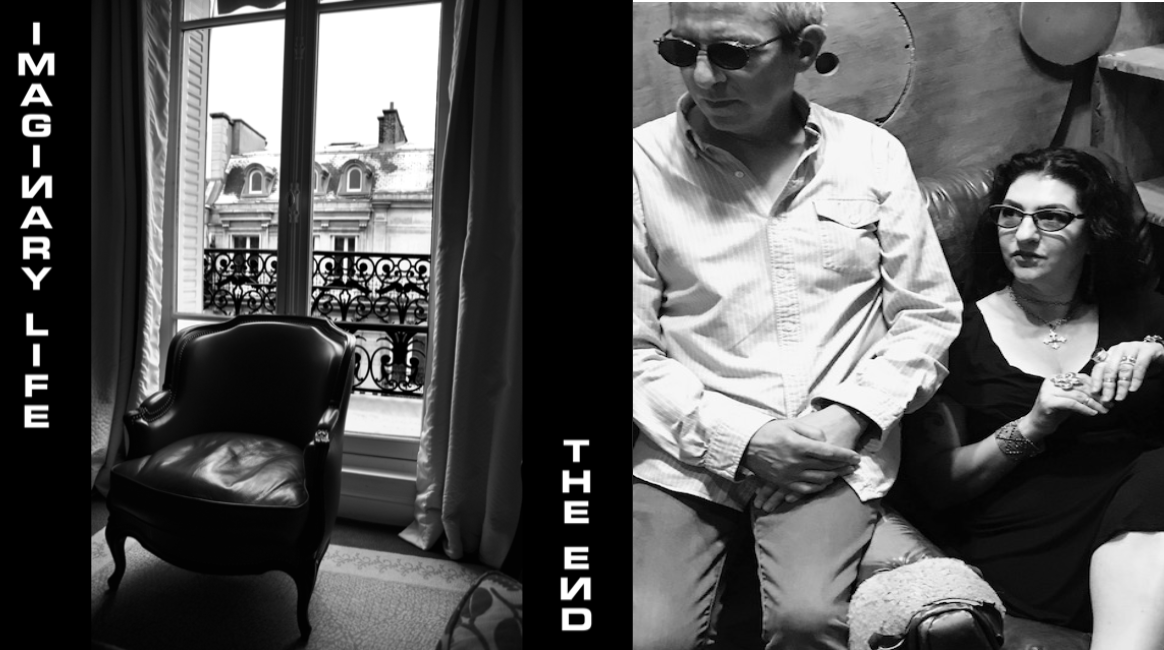



Photo by Dara Munnis courtesy of Music Man Ernie Ball

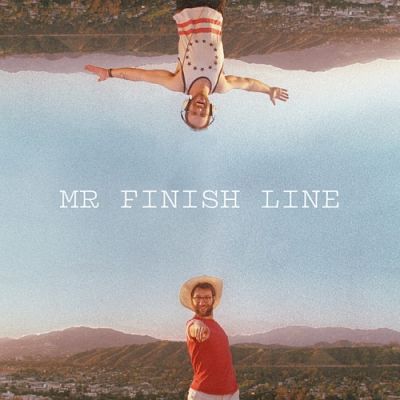
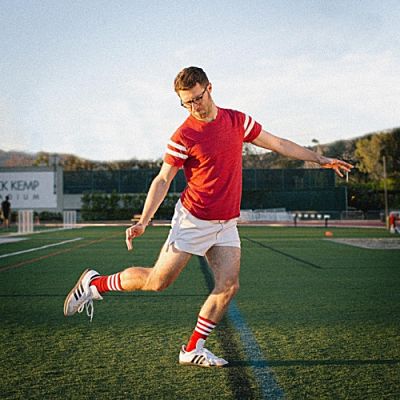

Iaquinto w. ’66 Fender in 1978… Steele w. ’66 Fender w. The Bangles Iaquinto with S.D. Curlee in 1980…. Molly Tentarelli with S.D. Curlee in 2019
I have owned countless electric basses in the 48 years that I’ve been playing, which is weird, since I’m only 25 ????.
When I left New York City in 1978, I sold all but one bass: a 1966 Fender Precision Bass that I bought from Manny’s Music, which is where I was working.
The bass was white that had become yellowed over the twelve years it was around, and it had a rosewood board and a beautiful tortoiseshell pick guard. Being the knucklehead I was, I stripped the paint off of it (lighter fluid, matches, and a scraper, and I caught my drapes on fire. Knucklehead). I was a huge Peter Cetera fan so I wanted my bass to look like his, which was natural with a maple neck. One of the guys I worked with at Manny’s happened to be selling an early-70’s maple Fender P-Bass neck so I bought it and installed it on my bass. Voila! It looked great and sounded even better than it did before. That was the bass I moved to L.A. with.
It was my only bass until I bought a back-up at the end of 1978. At that time, I was the bass player in a magnificent original band called “Hit N Run.” We were right there at the flash point of the whole “New Wave” scene in L.A., playing all the iconic clubs in town. We were mainstays at Madame Wong’s, The Starwood, The Whiskey (BEFORE they made you pay to play!), The Troubadour, The Roxy, and many more. We were always doing gigs with bands like the Bus Boys, The Motels, 20/20, The Pop, and a lot of other L.A. greats.
After my Fender started having issues at one of our gigs, I knew I needed a back-up bass so I went to a music store in Santa Monica and fell in love with a bass made by a company called S.D. Curlee. I had never heard of them but out of all the basses I tried, it was the winner. The bass looked like a cross between my old Gibson EB-3 and my Fender, and it had a medium-scale neck, which was very comfortable and easy to play. I bought the bass and it immediately became my go-to, leaving the Fender as the back-up.
I did a lot of gigs and recording sessions with that bass and it rocked! Right around this time a friend of mine had gotten into a car accident and her bass, a Music Man Sabre, was destroyed. She was playing with a couple of very cool bands and needed an instrument, so I sold her my Fender, which I had painted red, sanded back to natural, swapped out the original pickup for a DiMarzio, added a Jazz Bass pickup to, and then removed that pickup and filled the hole with wood putty. Being an old Fender, it still sounded great and was unbeatable.
I sold her the bass for next to nothing because she was my drummer’s girlfriend and she was a wonderful person and a fantastic bass player. Her name was Mickey Steele. She wound up becoming the bassist for the Bangles, where she used the name “Michael Steele,” and I was blown away to see her using that Fender, with its wood putty scar and everything, in the band’s first MTV video!
She even used it for the Bangles reunion concert years later! So there I was, with my S.D. Curlee and my new back-up bass, a modified Gibson G-3 (which we don’t need to talk about). Long story short, I sold the S.D. Curlee to my friend, Franklin Odel and he used it in his studio and that was that.
The Fender got famous with the Bangles and the Curlee had a new home. Life happened, years passed, etc., etc. Fast forward to today, February 3rd, 2019. I see a post from the daughter of the lead singer of Hit N Run, whose name is Linda Stevens. Her daughter, Molly Tentarelli, who is a phenomenally talented singer-songwriter, is sitting and playing an S.D. Curlee bass which looks exactly like the one I had. After several back-and-forth posts, I find out that it is, in fact, my old S.D. Curlee Bass.
Linda got it from Franklin and now Molly has it. Me = Mind Blown!!! After four decades, it does my heart and soul good to know that this beautiful bass that was an important part of my life and that I made so much great music with, is alive and well and in the family, so to speak.
Thank you, Franklin Odel, Linda Stevens, and Molly Tentarelli for making my day. My face hurts from smiling so much. And everyone needs to check out Molly Tentarelli on Facebook and make sure you buy her music, which is fantastic!
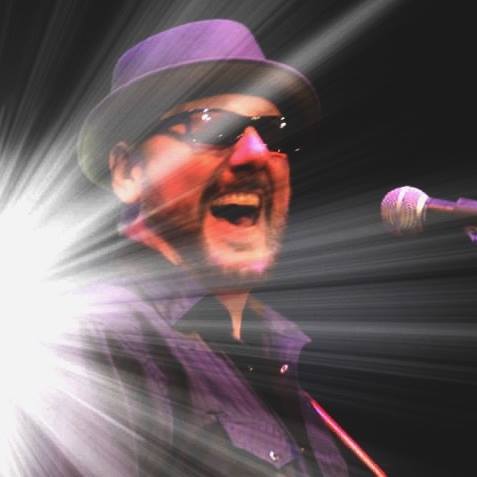

A producer, arranger, composer – Jorge Casas was a versatile electric / upright with a resume that spanned a career-long Musical Directorship with Gloria Estefan & The Miami Sound Machine, and record / touring credits including Jon Secada, Laura Branigan, David Coverdale & Jimmy Page, Madonna, Ricky Martin, Luciano Pavarotti, Dave Grusin, Frank Sinatra, and Julio Iglesias to cite a select few.
Jorge Casas Sound &Vision…
Miami Sound Machine:
“Rhythm Is Gonna Get You” https://youtu.be/CZkjeJKBI0M
“Conga” https://youtu.be/54ItEmCnP80
“Bad Boy” https://youtu.be/G-TfKHKbNys
Coverdale Page: “Take Me for A Little While” https://youtu.be/PtfM2CozoAo
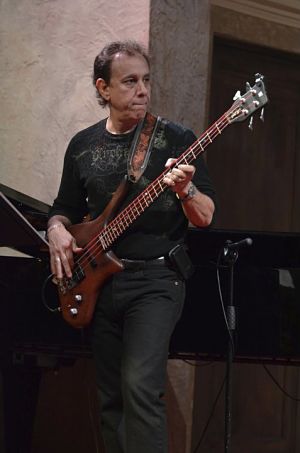

Courtesy of Chris Brubeck Com
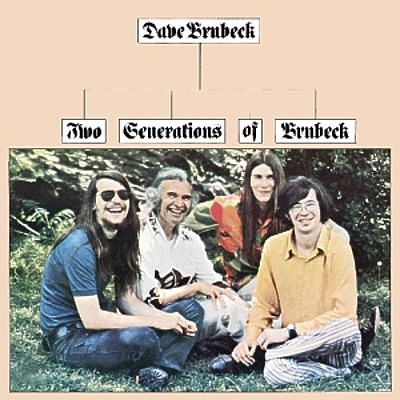
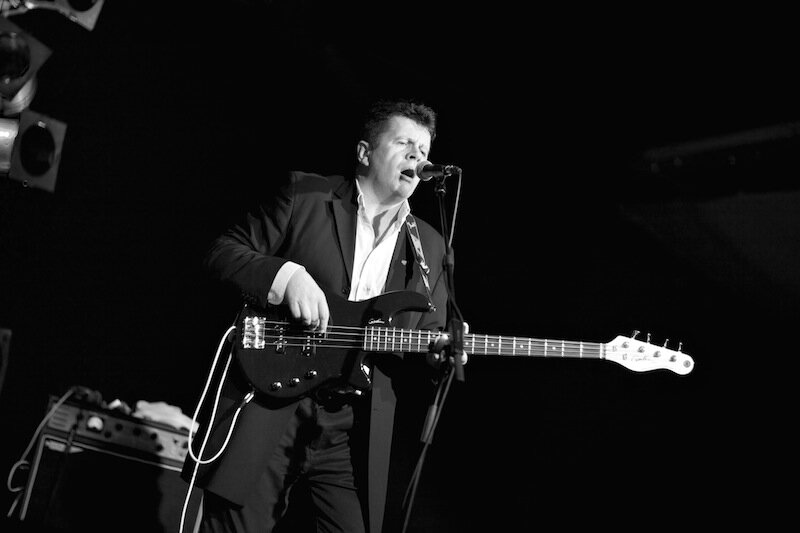
“Eric was a bad-ass bass player and a very funny man,” recalled Graham Nash upon learning of The Hollies’ founding bassist’s passing in early 2019. Commencing his career with Tony Hicks in the Manchester ensemble The Dolphins – Haydock was among the first to adopt the Fender Bass VI six string (see below).
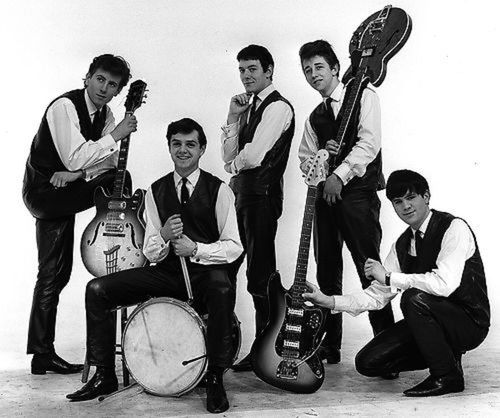
Considered one of the premier UK players in the early 1960s and revered by NOTES FROM AN ARTIST host David C. Gross and NFAA rockers including Edward Rogers and Sal Maida; Haydock, according to the press clips I’ve reviewed, was prevented from writing songs for the group, and consequently left and/or was sacked following a dispute with management.
Regardless, that’s Eric anchoring the lads’ early hits “Just One Look,” “Look Through Any Window,” and their first chart-topper “I’m Alive.”
Following his departure in ’66 Eric formed Rockhouse – a rhythm and blues outfit which was a commercial flop, hence Haydock left the music biz.
Eric Haydock Sound & Vision….
“Just One Look” https://youtu.be/r-RJF8dIJDo
“Look Though Any Window” https://youtu.be/0hhU4TSY0f0
“I’m Alive” https://youtu.be/qVJ0jGC_0tU
Haydock’s Roadhouse workin’ a John Sebastian tune “Lovin’ You” https://youtu.be/iVAYszhjhlo
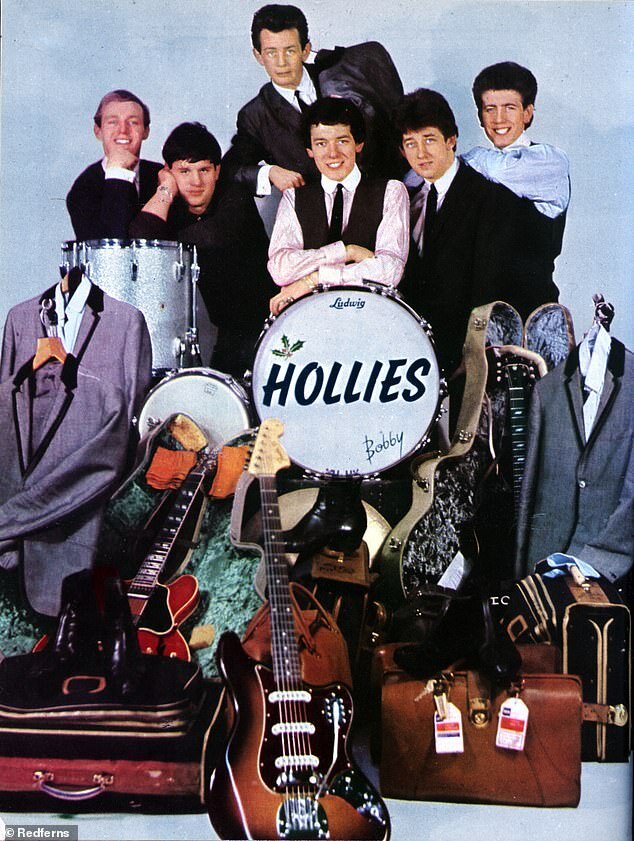

When you’re a bass player who plays in a great band that writes great songs with a great singer, you play to the song! Which is exactly what Mike Hogan did during his tenure with The Cranberries, working the pocket and flexing his harmonic chops when necessary.
Dig Mike’s pulse beneath their final single “All Over Now.” https://bit.ly/2HbbAHh

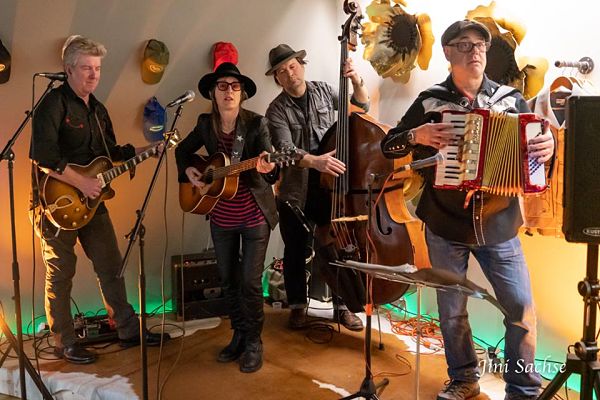
Photo Jini Sachse
Sometimes the songs are so doggone good that the doghouse plays itself. Skip Ward works the pocket on upright in the service of urban / urbane Americana songstress Emily Duff who waxes oh-so-poetic over our collective human condition throughout Maybe in the Morning .

Photo courtesy of Jini Sachse
Cut at FAME Studios, you can feel the history of this iconic locale in the grooves and melodies as rendered by Duff, Ward, drummer Kenny Soule, guitarist Scott Aldrich and session legend Clayton Ivey.
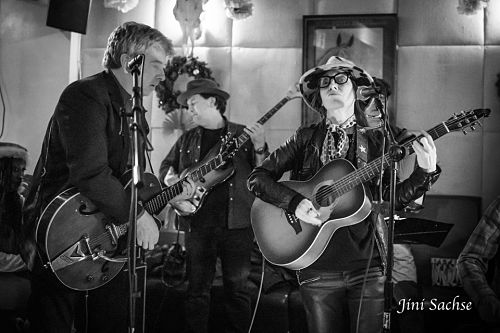
Dig Ward’s rhythm & blues and jazz flavored motifs which afford the Duff ensemble a definitive swingin’ disposition.
And they’re even better on stage….
Dig Emily and Skip on the title track https://youtu.be/Zkquk5FhONQ
Dig the live version of “Picture Me Gone” https://youtu.be/jxVFT569tCM
Dig Skip’s groove on “Hypmotizing Chickenz” https://youtu.be/PWGRr9tUSSI

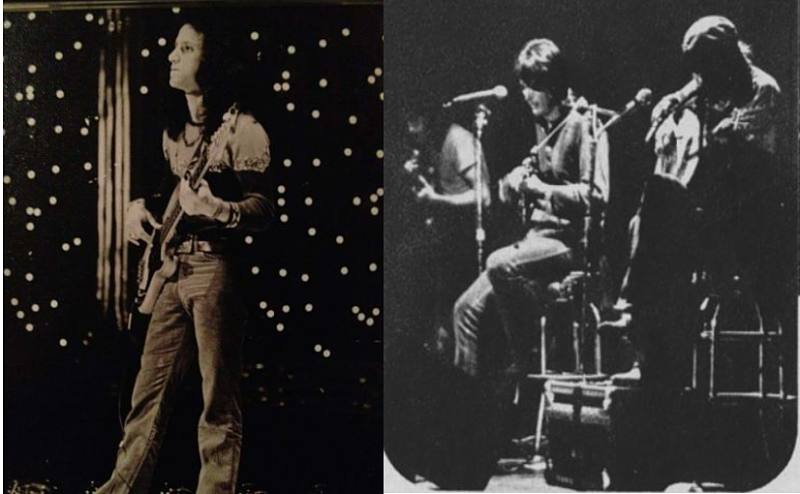
By Jeff Ganz
In the category of “Bassists That Deserve More Recognition”, the first one that comes to mind is Bobby Lichtig.
Bobby is probably best known for his fine bass playing on Seals & Crofts’ biggest hits, but was also an accomplished woodwind player and songwriter. Bobby was also my first cousin, whom I admired my whole life, hoping to model my career after his.
Bobby’s bass sound, both live and on record, was the epitome of what a superb musician could do with a Fender Precision Bass. Later in his career, Bobby had one of the first and one of the best B.C. Rich basses I ever saw or heard, certainly in his hands. Bobby first came to the public eye as a member of The Last Ritual, recording an album for Capitol Records in 1969. He joined Seals & Crofts as their sole accompanist on bass and flute in time for their second album Year Of Sunday, released in 1971.
Bobby’s bass playing on “Summer Breeze” and “Diamond Girl” are textbook examples of how to be a distinctive and sensitive accompanist. In 1975, Bobby joined the L.A. based super group Bonaroo; they did one album for Warner Brothers Records. There are three particular moments I remember fondly with Bobby. The first one was in 1972 when he stopped by my parents’ house – on his way to play with Seals & Crofts at Carnegie Hall! The second was in 1991 at the Pacific Amphitheater in Costa Mesa, California when he came to see me playing with Johnny Winter.
The third moment was in 2011, when I visited Bobby at his home in Woodland Hills, California after not seeing him for many years. It was a terrific reunion, complete with ice cream. Bobby passed away in 2012 of long-time complications from a traumatic head injury.
Bobby Lichtig Remembered by KYBP Readers:
Blake Lichtig: As his son, this made me so happy to read and thank you for writing this!!
Preston Bealle: I love Seals and Crofts to this day, and always noticed the tasty bass playing without being aware of who it was. I especially like the work on “Fiddle in the Sky”. Glad to find out he’s remembered here.
Karla: I knew Bobby waaaay back in the 60’s when he worked at the Coney Island Pub in NYC. He introduced me to Jimi Hendix first album. He was such a nice person.
Keith McGee: What a great discovery! I loved the bass on Seals & Crofts albums, and many years ago I discovered the name of this fine musician. So sorry for your loss, to hear of his passing. He left a great musical legacy.
Kenny Martel: It was late in 1963. We (“The Madisons”) had already been together for more than two years playing after school dances, Synagogue & Church dances and some local teenage night clubs. Our compliment was two guitars, drums and saxophone (no bass). Suddenly, “The Beatles” were EVERYWHERE and THEY had a bass player! So did our local competition: “The 3 Jacks!” It was obvious…one of us HAD to learn bass! Also “obvious”…neither “The Beatles,” or “The 3 Jacks” had an (obsolete) saxophone! Consequently, the necessary “assignment” fell upon our sax player……Bobby Lichtig!
Clark Garmen: In the mid-eighties and again in 2011, Bobby was our bass player in ‘In Transit’ with Arista and RCA Records. What a great band and bassist!
Rhonnie Bender: As Bobby’s sister, your article made me smile……
Bobby Lichtig Sound & Vision…
Seals & Crofts:
Midnight Special with Seals & Crofts “Summer Breeze” https://youtu.be/DTv0K2SUlCY
Live TV performance of “Diamond Girl” https://youtu.be/Vgl2sk391ds
Tonight Show with Johnny Carson “Hummingbird” https://youtu.be/XK_hffjACV0
“We May Never Pass This Way Again” https://youtu.be/8Dw8R6kIKyw
“Sudan Village” https://youtu.be/-0VDA6-xvG8
“Fiddle in the Sky” https://youtu.be/2STEkoTFm7k
“Year of Sunday” https://youtu.be/qYITQmUJ8eY
Bonaroo:
“Melody Maker” https://youtu.be/rjllZ6Y-ivM
“Sally Ann” https://youtu.be/bV1atlfEltU
In Transit:
In Transit (1980) https://youtu.be/2oUhFLqnSHM
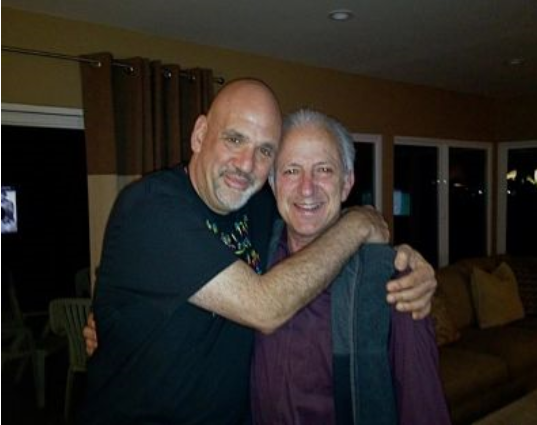
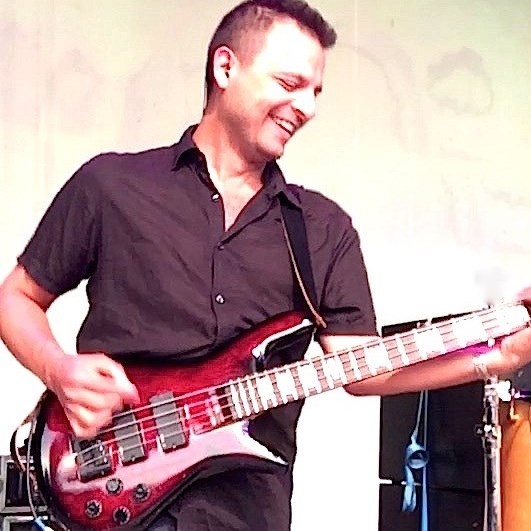
“What’s up beautiful people?”*
With all deference to Sammy Davis Jr. – he’s the hardest working cat in show business – ever! Akin to his former teacher Anthony Jackson, we refer to John Montagna as a “bass guitarist.” Yet, John is much, much more than that: his long list of credits include: composer, singer, recording artist, educator, historian, multi-instrumentalist, producer, band-leader, journalist, sideman (“Happy Together Tour,” Todd Rundgren, Micky Dolenz, The Turtles, Chuck Negron, Mark Farner, Mitch Ryder, Denny Laine, The Cowsills, Felix Cavalerie, to cite a very select few), band member (Alan Parsons Project, among others), Berklee alum, super-fan, pundit, prog prognosticator, broadcaster with bassist Jeff Ganz on “Breaking It Down,” host of a sensational seminal slab soliloquy aptly entitled “Ride Jams” rendered from his automobile to and fro gigs, and Radio418 podcaster – among other endeavors.
A multi-genre genome, a wizard a true star virtuoso of the instrument, ain’t no musical mountain too high for Montagna. “Listen to music, listen to music, listen to music…it’s good for ya!”
** * / ** John Montagna-isms
Dig John Montagna on Know Your Bass Player on Film Season Deux 2018, New York City, Euphoria Studios https://bit.ly/3b7J5FS
